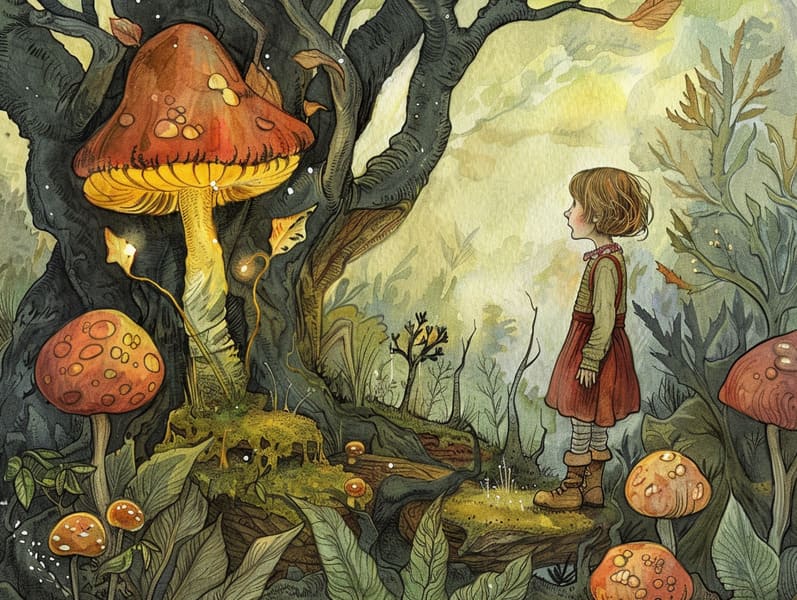The Formation of Timeless Fairy Tales with the Steadfast Beauty.
The Formation of Timeless Fairy Tales with the Steadfast Beauty.
Blog Article

Children's fairy tales have timeless appeal. These tales have been whispered from one generation to the next far before they were ever written down. They came from a variety of cultures, including African traditions. They were initially transmitted among older generations, often carrying themes and messages reflective of the societal norms and beliefs of the time.
The Grimm brothers, the two Grimm brothers, were among the first to collect many of these beloved narratives. Their anthology, "Grimm's Fables," included narratives like "Cinderella," "The Story of Hansel and Gretel," and "The True Story of Snow White," which have since become staples in the world of famous fairy tales. Similarly, Hans Christian Andersen's enchanting stories, such as "The Mermaid's Tale," and "The Duckling that Could," have enchanted hearts worldwide, guaranteeing their place in the pantheon of famous fairy tales.
Despite their historical roots, classic fairy tales remain as impactful as ever, especially as children's night stories. These fantastical tales are now available in numerous formats, including vividly illustrated books, charming animations, and online fairy tales.
Their unwavering allure can be linked to several charming aspects:
Ethical Lessons: Classic fairy tales often offer important moral lessons. Narratives like "The Tale of the Boy Who Cried Wolf" teach the importance of truth, while "The Tortoise and the Hare" exemplify the qualities of steadfastness and unpretentiousness. These stories offer little ones clear distinctions between truth and falsehood, guiding their moral compass in a subtle yet significant way.
Sympathy and Perception: Old fairy tales frequently showcase personalities facing difficulties and adversities, fostering readers to sympathize with their struggles and rally behind their triumphs. For instance, "The Story of Beauty and the Beast" conveys the necessity of looking past the exterior to recognize the real person of a being, enhancing perception and insight.
Cultural Appreciation: Many traditional fairy tales are interwoven with the cultural contexts from which they bloomed. Engaging with these narratives can provide informative snapshots into different historical contexts, building a sense of global respect and recognition.
Imagination and Innovation: The mythical elements in timeless fairy tales—mythical creatures—kindle children’s fantasy worlds. These narratives guide readers to mythical realms, promoting innovative thinking and a sense of amazement that stays a lifetime.
Old fairy tales are not only charming but also informative. They provide captivating tools in strengthening various intellectual and emotional capacities in little ones. When classic fairy tales are told out loud, they enhance speaking abilities by offering new terms and complex sentence structures. This practice also fosters auditory skills and attention span, as the young track the narrative, keen to see what happens next.
Furthermore, reflecting on the themes and characters of classic fairy tales can advance cognitive skills and critical thinking. Children learn to notice patterns, predict happenings, and catch on to cause and effect. These debates also support the young reveal their thoughts and feelings, boosting their emotional intelligence.
In today’s online age, the abundance of digital fairy tales has made these stories more acquirable than ever. Web platforms and apps make available large libraries of traditional fairy tales that can be looked at or heard anytime, anywhere. Fairy tales recited are particularly liked, sharing an charming way for kids to engage with these whimsical stories. Read-aloud stories and read-to-me stories guide characters and settings to life, often complemented by enchanting music and background music that intensify the narrative adventure.
The persistent attraction of classic fairy tales lies in their ability to adjust to modern society while sustaining their basic principles. Contemporary retellings of these fairy tales often incorporate more diverse figures and modern settings, making them understandable to today’s audience. However, the central morals of heroism, generosity, and righteousness remain unchanged, continuing to appeal to young listeners of all ages.
Traditional fairy tales also offer a sense of assurance and knowability. They deliver up a orderly narrative with a clear beginning, middle, and end, often finishing with the termination of conflicts and the triumph of right over wrong. This uniformity can be solacing for kids, bringing a sense of invariability in an unstable world.
Classic fairy tales continue to enthrall and enlighten new generations, maintaining their grace and meaningfulness in modern society. As nighttime stories for kids, they deliver a perfect blend of enchantment and education, enriching moral values, empathy, and creativity. The abundance of free fairy tales online and the commonness of fairy tales recited promise that these ancient narratives remain available to new generations.
By guarding and conveying these stories, we continue to celebrate the rich tapestry of cultural heritage and cultural heritage. Whether you get more info are seeing a richly illustrated book, seeing a electronic library, or playing an narrated book, the wonder of popular fairy tales is always within reach. These fairy tales convey of the unwavering presence of fairy tales and its ability to bind us across eras and regions.
If you are perusing a artistically illustrated book, exploring a web collection, or playing an spoken story, the appeal of old fairy tales is always within reach.
These stories remind us of the endless effect of stories and its ability to bond us across epochs and places, casting a charm that delights and instructs alike.